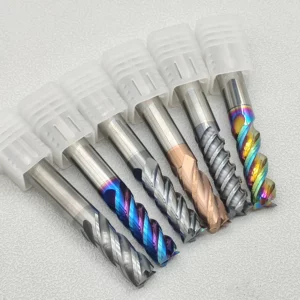Carbide roughing end mills are indispensable tools in the machining industry. They are specifically designed for roughing operations, where material needs to be removed quickly and efficiently. However, with numerous options available in the market, it can be a daunting task to choose the right carbide roughing end mill for optimal performance. In this article, we will explore the key factors to consider when purchasing these tools, ensuring that you make an informed decision and achieve the best results.
First and foremost, it is essential to understand the different types of carbide roughing end mills available in the market. There are various variations, including two-flute, three-flute, and four-flute options. Each of these variations has its own benefits and applications.
For instance, two-flute carbide roughing end mills are ideal for softer materials, as they provide better chip clearance. On the other hand, three-flute end mills are ideal for achieving higher feed rates and reducing vibrations. They are suitable for a wide range of materials, including aluminum and stainless steel. Lastly, four-flute end mills are known for their balance of chip clearance and cutting edge strength, making them suitable for general roughing applications in different materials.
When choosing a carbide roughing end mill, it is vital to consider factors such as material hardness and the desired cutting speed. For instance, if you are working with hardened steel or stainless steel, a four-flute end mill with a higher helix angle and a specialized coating can offer excellent performance. On the other hand, if you are machining softer materials like aluminum, a three-flute end mill with a lower helix angle can prevent the material from sticking to the flutes and ensure smooth chip evacuation.
Another crucial aspect to consider is the flute geometry. The number and shape of flutes play a significant role in chip evacuation and heat dissipation. A higher number of flutes generally allows for smoother chip evacuation, reducing the likelihood of built-up edge and improving surface finish. However, more flutes can also lead to reduced tool life. Finding the right balance between flute geometry and the specific demands of your application is key to achieving optimal performance.
Additionally, the coating of the carbide roughing end mill is an important consideration. Coatings like TiAlN and AlTiN offer increased hardness and wear resistance, making them suitable for high-speed machining and extended tool life. Some coatings also provide additional benefits like enhancement in lubricity and increased resistance to thermal cracking and chip welding.
Ultimately, customer requirements and application areas play a significant role in the decision-making process when purchasing carbide roughing end mills. For example, if you are machining complex contours, a variable helix end mill can help reduce vibrations and ensure precise machining. Conversely, if you are working with materials that produce long chips, a variable pitch end mill can help break the chips and prevent them from causing tool breakage.
In conclusion, selecting the right carbide roughing end mill is crucial for achieving optimal performance in the machining process. By considering factors such as flute geometry, coating, and application requirements, you can make an informed decision and achieve excellent results.

